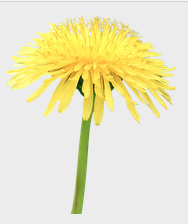
Wild Healers
Do not define what is or is not healing. They support and network with those who aspire to have a pure heart and whose common goal is to explore healings infinite possibilities and intelligence.
Wild Healers hold in common certain immutable principles. These include integrity, honesty, a non-judgemental respect for all, the need for self-understanding and genuine enquiry.
Wild Healers consider that the vibration and purpose of Love & Compassion form the intent that is central to their work and lives.
Wild Healers hold to the view that an essence of our quest is the travelling, not the arrival. As a result, they do not see any fixity in the manner of their healing, in the manner of their teaching. Or in their beliefs and are thus open and flexible in pursuit of their quest.
Wild Healers automatically acknowledge the right of others to freedom of expression, to follow intuitively the path that is right for them and to use their healing, whichever method or combination of methods they use, in a way that they believe is in the very best interests of their clients.
Wild Healers are dedicated to finding the best way of helping and guiding others, and being aware that this goal is not reached by only one route. It is honouring the path of others and acknowledging that healing happens in many ways and no one knows what is the best way in every circumstance.
Wild Healers aim to encourage the acceptance of the innate natural healing abilities which each individual possess, and encourage their expression in all aspects of life.
Nigel Carter 24/5/42 – 24/3/21
Nigel was a member of a small group who called themselves Wild Healers and who produced the above principals. Nigel along Joan Kendal co-chaired ATH.
“It is lovely to know that Nigel’s spirit is present in the Healing and Creativity of ATH. I recall a healing group at Lowther Hill where he talked about the Wild Healers. They had chosen the emblem of the Dandelion. For them it represented wildness pushing up through the concrete of any rigid approach to healing. He was disenchanted at the time with the formality of doing healing in strictly ritualised ways: any insistence, for example, that one must have ones hands in a specific pose, or that the healer and recipient must be in a particular position to “do” a healing. Not that Nigel ever wanted to dispense with the absolute responsibility in the way that healers practice. That mattered to him immensely. He and his Wild Healing colleagues simply felt that there was more to healing than a specific set of gestures and postures. He had been in dedicated service at the healing centre in Bromley for many years and I know he deeply respected his fellow healers there, but I think he was watchful of anything that felt like dogma: any school of thought that says “this is the only way to do it”. I remember how free and happy he was talking about this positive movement towards something innate in himself and his healing. The word “wild” carried meaning for him beyond cutting loose from rigidity. It expressed awe at the astonishing structure of nature, such that a tiny dandelion, dismissed as a weed, can forge its way up to the light.” Barbara Dryhurst
